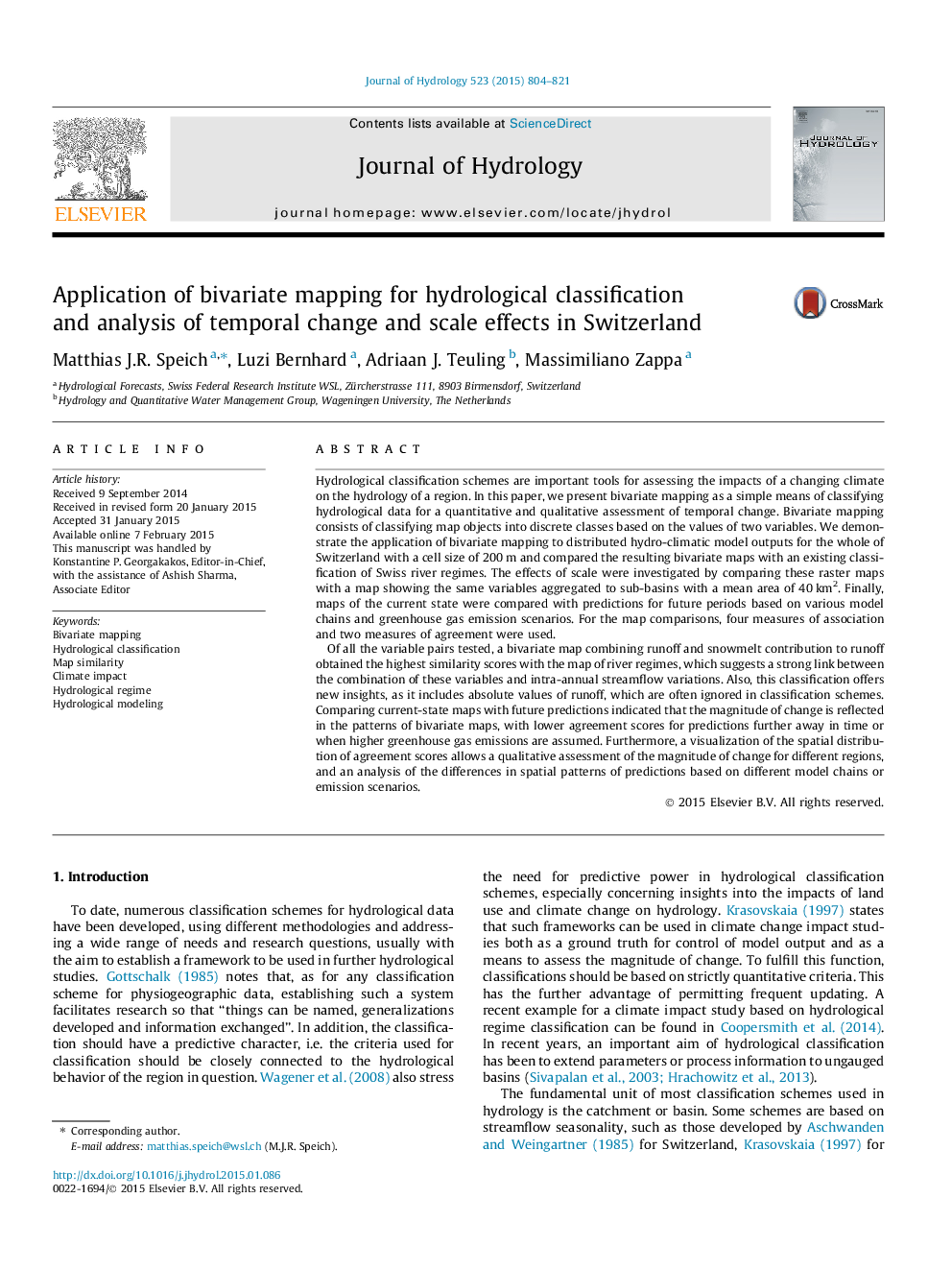| کد مقاله | کد نشریه | سال انتشار | مقاله انگلیسی | نسخه تمام متن |
|---|---|---|---|---|
| 6411800 | 1629927 | 2015 | 18 صفحه PDF | دانلود رایگان |
- Bivariate mapping provides a classification scheme useful for hydrological data.
- Classification can be done at the scale of catchments or grid cells.
- Comparing maps using similarity measures permits an assessment of climate impact.
- The assessment of temporal change contains qualitative and quantitative aspects.
- As results confirm previous findings, this is a sound method for assessing change.
Hydrological classification schemes are important tools for assessing the impacts of a changing climate on the hydrology of a region. In this paper, we present bivariate mapping as a simple means of classifying hydrological data for a quantitative and qualitative assessment of temporal change. Bivariate mapping consists of classifying map objects into discrete classes based on the values of two variables. We demonstrate the application of bivariate mapping to distributed hydro-climatic model outputs for the whole of Switzerland with a cell size of 200Â m and compared the resulting bivariate maps with an existing classification of Swiss river regimes. The effects of scale were investigated by comparing these raster maps with a map showing the same variables aggregated to sub-basins with a mean area of 40Â km2. Finally, maps of the current state were compared with predictions for future periods based on various model chains and greenhouse gas emission scenarios. For the map comparisons, four measures of association and two measures of agreement were used.Of all the variable pairs tested, a bivariate map combining runoff and snowmelt contribution to runoff obtained the highest similarity scores with the map of river regimes, which suggests a strong link between the combination of these variables and intra-annual streamflow variations. Also, this classification offers new insights, as it includes absolute values of runoff, which are often ignored in classification schemes. Comparing current-state maps with future predictions indicated that the magnitude of change is reflected in the patterns of bivariate maps, with lower agreement scores for predictions further away in time or when higher greenhouse gas emissions are assumed. Furthermore, a visualization of the spatial distribution of agreement scores allows a qualitative assessment of the magnitude of change for different regions, and an analysis of the differences in spatial patterns of predictions based on different model chains or emission scenarios.
Journal: Journal of Hydrology - Volume 523, April 2015, Pages 804-821
